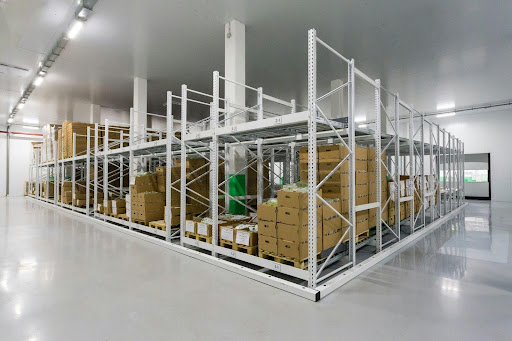In modern data pipelines, continuous data integration and data frequent updates may cause unintended data errors. Blue-green Deployment ensures a final checkpoint for accurate results. In this blog, details are provided on how to implement blue green deployment in a data warehouse project.
Applied AI
Data Analytics
Data Engineering
.jpeg)
In modern data pipelines, the source data is ingested continuously, and the data warehouse is built repeatedly based on the latest data. A new data warehouse version is created for the users with the latest transformation specifications with ever-shortening intervals: weekly, daily, multiple times a day, and even hourly, based on the situation.
From time to time, these updates in data and transformation may result in unintended consequences, and failures may happen. These failures may cause some or all of the final exposed data to be missing or wrong. Of course, there usually are tests (standard and custom tests for previously known scenarios) that catch and alert to possible failures. These tests warn the owners that something went wrong - while the data reaches production in that state, with errors. While the action is taken and fixes are applied, the data will continue to be exposed with errors or unavailable. This is not a desired outcome at all.
Ideally, there needs to be a final checkpoint to ensure everything has run as expected. If yes, the new data warehouse version can be exposed to the users. Blue-green Deployment does just that with the steps below:

While one environment (Blue) is in production, available for its dependencies, the other environment (Green) is waiting for the following data refresh.
When the data is updated, the data transformation steps are complete, and all tests indicate that the update was successful; the two environments "swap" places.
This happens momentarily in the data platform, and now your ML models, reports, and dashboards all point to this new data version - without interruption and with minimized (hopefully eliminated) risk of disruption.
In this case, the “swap” does not take place. The applications continue consuming data from the Blue environment. Data unavailability or inaccurate data scenarios are avoided. During this time, the root cause of the test failure is searched, addressed, and the refresh will be rerun.
Please note: The implementation steps below are based on the dbt and snowflake environment. This article will still be helpful regarding the essential concepts if dbt and Snowflake are not part of your current data stack.
Below we will walk you through all the steps to implement blue/green in a dbt project (let's say the project is called my_transformation ) that uses Snowflake as Data Warehouse.
First, we must ensure that we have the necessary structure for the blue-green deployment. For that, we need the following:
In this example, we will use the following:
| Emil | Tobias |
All applications should read from the “blue”, and your development branches should be merged to the green database.
We'll use the same schema name, my_schema, for the blue and green databases.
Add configuration for snapshots for the target_database
snapshots:
+target_database: my_transformation_snapshots
a. ref()
This macro will overwrite the default behavior of the dbt ref macro. Now instead of getting the full path for a table, it will not include the database name. This is important since we will eventually swap the blue and green databases - and we do not want the green database reference to persist.
E.g.,
Default Behavior
Database_name.schema_name.table_name
New Behavior
schema_name.table_name
{% macro ref(model_name) %}
{% set rel = builtins.ref(model_name) %}
{% if rel.database == 'my_transformation_snapshots' %}
{% do return(builtins.ref(model_name)) %}
{% else %}
{% do return(builtins.ref(model_name).include(database=false)) %}
{% endif %}
{% endmacro %}
b. get_snapshot_write_schema()
Based on the dbt target name, this macro will return the schema_name where the snapshot model will be written. The behavior we want is to write to the production schema only when we are in production.
{% macro get_snapshot_write_schema() %}
{% if target.name in ('prod') %}
{% set var_target_schema = 'snapshots' %}
{% else %}
{% set var_target_schema = 'snapshots_' ~ target.name %}
{% endif %}
{% do return(var_target_schema) %}
{% endmacro %}
Make sure you add the following config to all snapshot models in your dbt_project
{{
config(
target_schema=get_snapshot_write_schema()
)
}}
c. ref_snapshot
This macro will get the relation for the snapshot model. Even in a dev environment, we want our models to read from production snapshots. This helps us emulate the production environment better while in development environments by
{% macro ref_snapshot(snapshot_name) %}
{% set snapshot_relation=ref(snapshot_name) %}
{% set prod_snapshot_relation = adapter.get_relation(
database='my_transformation_snapshots',
schema='snapshots',
identifier=snapshot_relation.identifier
) %}
{{ return(prod_snapshot_relation) }}
{% endmacro %}
Make sure you replace the ref macro to ref_snapshot when referencing a snapshot model e.g.
with some_cte as (
select * from {{ref('non_snapshot_model')}}
),
some_snapshot as (
select * from {{ref_snapshot('my_snapshot_model')}}
)
...
d. Swap_database
This macro implements the snowflake feature for swapping databases. This macro is used with a run-operation command in the next step.
{% macro swap_database() %}
{% set sql='alter database swap with ' %}
{% do run_query(sql) %}
{{ log(""database swapped"", info=True) }}
{% endmacro %}"
Add the swap database operation to the commands list in your dbt cloud job after the dbt build comment.
dbt build
dbt run-operation swap_database
Set the target name
Ensure the target name under your environment equals “prod.”
Set the database name.
Make sure the database name under your environment is equal to
“my_transformation_prod_green”
Whenever your project runs with the above blue-green implementation, the following events occur:
This checkpoint before deployment approach is one of the essential elements in data quality in your data warehouse.
Blue-green deployment can be further optimized when a comprehensive test set is built in your transformation project. You can find 205 Data Lab data quality checklist in this blog post: Data Quality Part I
Additionally, if you have any questions or would like to learn more about our specialized solutions, please don't hesitate to reach out to us at hello@205datalab.com
By leveraging bulk data from providers like data.ai, B2B companies selling to mobile app publishers and developers can optimize their sales efforts and achieve scalable results. Implementing a data-driven approach, integrating it with CRM systems, and continuously refining the strategy based on feedback will ensure that your sales team targets high-potential apps and publishers, ultimately leading to increased revenue and success. By moving away from manual and inefficient processes, you'll be able to achieve greater consistency and effectiveness in your sales efforts.
Are you interested in exploring this approach for your company and need implementation help? With over five years of experience working with mobile app data, our team can help you implement this type of solution, even if you don't have a data warehouse or access to internal data resources. Start a conversation with us today, and let us help your team sell more effectively and efficiently!
Data Analytics
#Data Warehouse

Part of the Data Leaders Uncovered series.
Read Post
Featuring Russ Felker, CTO and logistics technology leader
Read Post
Salesforce migrations aren’t one-off events—they recur every few years.
Read Post
Most supply chains generate enormous amounts of operational data, yet very little of it translates into daily decision clarity.
Read Post
Part of our #DataLeadersUncovered series — conversations with data and analytics leaders shaping how organizations use data to drive results.
Read Post
Healthcare has no shortage of data. Electronic health records (EHRs), claims data, insurance premiums, and financial systems generate enormous volumes every day. Yet despite the promise of AI and advanced analytics, healthcare organizations often struggle to turn that data into action.
Read Post
In this installment of Data Leaders Uncovered, we meet Angelika Kenward, Analytics Manager at a global events and media company.
Read Post
In today’s customer-obsessed world, it’s easy to talk about personalization, omnichannel journeys, and “data-driven CRM.”
Read Post
You don’t usually associate spreadsheets and dashboards with justice. But you should.
Read Post
On March 1, 2025, one of our clients received an unwelcome surprise in their inbox.
Read Post
AI is reshaping industries, but the fundamentals of data remain unchanged. In this conversation with Ashish Mohan, we explore why problem definition and statistical thinking still drive meaningful outcomes.
Read Post.png)
The streaming tv platform Tubi was launched in 2014. Its revenue had reached $150 million by 2019, and by 2023 the revenue was $900 million.
Read Post
In our latest installment of the "Data Leaders Uncovered" series, we sat down with Maxwell Dylla, a data scientist with a background in materials science engineering.
Read Post.png)
We’re excited to continue our "Data Leaders Uncovered" series by sharing insights from Prem K. Narasimhan, a seasoned executive in the global life sciences industry. Prem has been at the forefront of addressing some of the most complex challenges in pharmaceutical research, clinical trials, and data management. This conversation shines a spotlight on how innovation and strategic collaboration can drive meaningful change in the industry.
Read Post
Welcome to the second installment of our blog series, "Data Leaders Uncovered." In this series, we delve into insightful conversations with data leaders across industries, exploring their challenges, innovations, and lessons learned in navigating the ever-evolving data landscape. In this post, we continue our discussions by spotlighting Jared, A Director at W.E. Aubuchon Company; a hardware retailer based in New England.. We discussed the intricacies of managing retail data, the transition to modern tools like Snowflake and Power BI, and the opportunities presented by AI-driven solutions.
Read Post
We’re excited to start our new blog series dedicated to conversations with data leaders. Each post will explore their challenges, innovations, and lessons learned in navigating the ever-evolving data landscape. We will be highlighting challenges they have overcome, pain points and the achievements they take the most pride in.
Read Post
CRM systems have long served as the primary hub for customer data. Platforms like Salesforce and HubSpot excel at tracking customer interactions, managing sales pipelines, and providing basic reporting. These functions have made CRMs indispensable for sales and marketing teams seeking a centralized view of customer relationships.
Read Post
In recent years, the concept of fractional professionals has gained significant traction, especially in tech companies. Fractional executives, such as fractional CFOs, CMOs, and RevOps, provide their expertise to organizations on a part-time or project basis, offering a cost-effective and flexible solution for companies that may not require or cannot afford full-time executives in these roles.
Read Post.png)
A Go-To-Market (GTM) organization may find it beneficial to invest in a Data Warehouse (DWH) alongside their Salesforce CRM when they encounter specific indications that their data and analytics requirements have surpassed the analytics and reporting capabilities of Salesforce.
Read Post.png)
Data quality is critical to any data warehouse project. However, it has often been overlooked as businesses focus on immediate value, with increased revenues and decreased costs.
Read Post
Companies targeting mobile app publishers can use mobile app data to identify potential customers. This blog discusses using bulk mobile app data for sales outreach.
Read Post.png)
Discover how applied AI can automate tasks and enhance productivity in data analysis. Explore a real life example of Applied AI in report generation.
Read Post

Stay in the loop with everything you need to know.
%203-svg%20(2).png)
.svg)
.svg)
.svg)